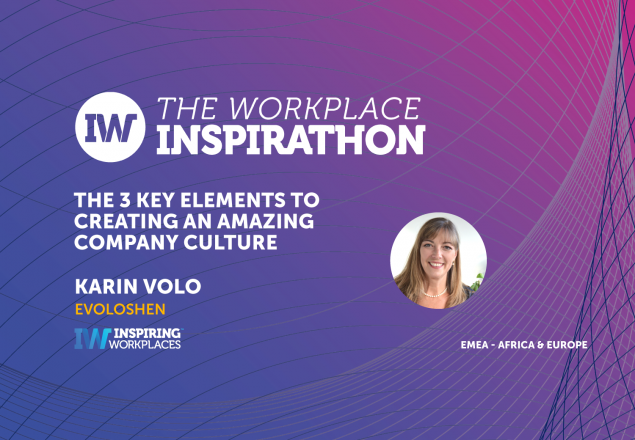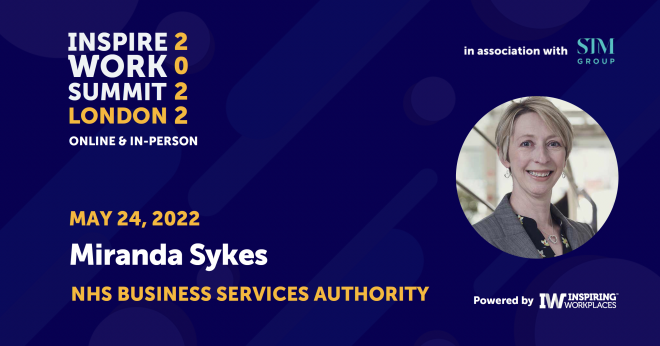
29th February 2024
Guest Blog: Why your employee engagement survey isn’t working

This guest blog is written by Lydia Blundell, Brand & Content Manager at Harkn; the live and continuous employee voice platform.
Read the original piece and find more insights on the Harkn blog.
I’m going to start with a quick analogy, often used by Harkn’s Head of Engagement Wendy Firlotte.
Imagine someone you have a close personal relationship with – your partner, perhaps, or your best friend.
Now imagine telling them that, from now on, you’re only going to communicate with them through a series of broadcast-style memos.
Everything from this Saturday’s dinner plans to major life updates will now be explained via email.
Your partner or best friend can’t respond to the emails until an allotted time when you invite their feedback.
Even then, they can only answer the questions you choose to ask.
Your partner or best friend wouldn’t be best pleased. In fact, they probably wouldn’t stick around for long.
And yet, this is exactly what happens when organisations rely on surveys to hear from their employees.
So, is it any wonder Gallup recently celebrated 23% of employee engagement globally as a ‘record high’ after decades of overreliance on the survey?
A brief history of survey use
The annual engagement survey has been the method of choice for understanding and attempting to improve employee engagement since the early 20th century.
Yes, really – the engagement survey was first introduced in the 1920s. Those so-called ‘employee-attitude’ surveys were considered revolutionary at the time, but they were largely focused on measuring compliance and satisfaction.
As relations between employers and employees have evolved, our focus has turned to engagement and its impact on retention and business performance.
When surveys first came about, management saw organisations as linear, machine-like entities.
The survey served that assumption well. You could ask a set of questions, get a set of results from your people, act on those results, and then expect a series of outcomes.
Right?
Except, in recent years, we’ve come to recognise organisations as something altogether different. We now know them to be complex and diverse social systems, made up of individual perspectives and experiences.
Shortfalls of the survey-based approach
Lack of agency
To state the obvious, employees can only answer the questions you have chosen to ask them.
This doesn’t leave room for expressing concerns on topics outside of those you perceive as the biggest issues affecting your workplace.
Organisations are made up of unique individuals with unique experiences. Asking the same set of questions to your whole workforce will never give you a clear picture of reality inside your organisation.
Inefficiency
In the early days of Harkn, we started working with an organisation who relied on an annual engagement survey. It took them three months to organise, a few more months to conduct, and another few months to analyse it and implement an action plan.
By the time the actions were rolled out, it was time for another survey.
Employees couldn’t remember what they’d said before, the business was operating in a new context, and their lived experiences had moved on.
Many organisations are seeking to tighten this cycle by introducing pulse-style surveys. The frequency of pulse surveys improves reliability of insight, but you are still confined to the same process and lack the opportunity to understand day-to-day employee experience.
Distrust
One of the most asked questions about surveys is, “are they really anonymous?”
In the case of external survey providers, they often are. Surveys conducted internally are usually confidential, rather than anonymous – those analysing the results know who you are, but they have assured you your answers will be kept private.
But the real problem here lies in perception. Back in 2017, Gallup found that 45% of employees taking part in engagement surveys believed their responses could be traced back to them.
The very fact that people are so concerned about the anonymity of surveys speaks volumes about trust levels in organisations.
Surveys are issued to build trust, but they are stifled by a systemic lack of it.
Inaction
Organisations invest immense resources in surveys because they want to improve things for their employees.
But a recent Gallup poll found that 92% of people think no action will come from their responses. That’s a staggering majority.
Leaders take action and expect positive outcomes, but employees still don’t feel listened to.
Why?
When analysing large swathes of data, leadership choose a set of problems to work on and changes are implemented in a top-down, one-size-fits-all manner.
The result is that – even when there is action from surveys – people don’t recognise it as addressing their problem or need. As a result, they don’t feel heard or valued by their organisation.
Today’s employees expect to have more say in shaping the future of their organisation than a set of broad changes that only cater to the loudest voices.
Ironically, employees who don’t feel listened to will start to disengage – the very problem the survey sets out to tackle.
Live employee voice: a different perspective
Surveys are so heavily relied upon in organisations because of the perception that they are the only way to hear from employees at scale.
This is not true. Not only is there another way, there’s also a better way.
To really unlock the diverse range of voices in your organisation, you need to close the feedback loop.
Speed of insight is essential for staying ahead of the curve, while anonymity and transparency are essential for equal voice.
There’s so much we could talk about here, but for now we’ll break it down into four essential building blocks for a robust, agile listening strategy:
1. Guarantee psychological safety
Psychological safety is the first essential for employee voice.
Decades of research into why people are reluctant to speak up at work has produced consistent results; silence in hierarchies is instinctive and safe.
Use tools that ensure end-to-end anonymity to start hearing more of what matters from your people.
2. Build relationships
There are no shortcuts to improving employee engagement. As our story illustrated, we wouldn’t expect our loved ones to elicit feedback from us through a series of broadcast-style memos.
When they need something from us, we do it willingly because a strong foundation of mutual trust and respect already exists.
Organisations need to focus on building relationships at scale in the workforce to stop engagement initiatives from feeling transactional.
3. Enable live communication
Close the feedback loop by giving your people access to always on, always live communication channels.
Whether it’s identifying someone who is beginning to burn out, or a crucial project that’s starting to derail, this speed of insight is key in today’s fast-paced workplace.
4. Encourage collective sensemaking
Surveys give individuals an opportunity to express their opinions, but they don’t offer insight into the perspectives and experiences of their peers.
The recent scandal at The Post Office demonstrates why shared awareness is crucial in navigating complex circumstances.
A flatter feedback model that combines transparency with anonymity fosters shared understanding of the challenges and opportunities facing your workplace.
“The future belongs to those who learn, listen, and adapt. The listening organisation doesn’t only adapt to change; it anticipates it by paying close attention to the subtle, often unspoken signals from within and around it.”
Satya Nadella, CEO, Microsoft
The age of listening
For organisations to thrive in today’s competitive world, they need an agile, resilient, and change-ready workforce.
We’re doing everything faster. Implementing new technologies, responding to shifting markets, and evolving our organisational structures.
Your people are the engine of that change, and yet organisations are still only hearing from them periodically.
The modern workplace is fast-paced and dynamic, and your approach to employee listening should be the same.
Find out how Harkn unlocks employee voice here, or book a virtual coffee with us to talk about how we might be able to help your organisation.





